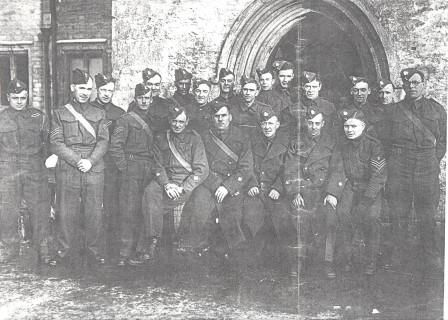WWII - Preparation for D-Day
- tiana746
- Jun 5, 2024
- 3 min read

The following is an extract from “A Step Back in Time” written by Pat Holmes. Pat’s book captured the memories of John Fisher who was born in the parish at Wyck Hill Farm, moved to the village when three months old and lived and worked in Maugersbury for the rest of his life, 1903 -1998.
Here, John recalls the day that the troops stationed in Maugersbury Manor during World War II left the village in preparation for D-Day.
“During the Second World War the army came to the hills to train. The beech trees in Maugersbury Road were good for camouflage. It was the weeks before the Normandy landings that I remember them most. There were Nissen Huts all along the road under the beech trees, and the men were living in these. Behind the Manor was a big mess hut, and then another great bit hut for the washrooms. Some Officers were roosting in the Manor itself, and I believe there were some Americans there at times. They found a while lot of port wine, in a sort of bricked up cellar. They were tapping a wall and it sounded a bit hollow, so they got in and there was all this port. They brought some down for Mother and me, but we didn’t care for it much. It was a bit corked. I think it had been laid down for Rupert Ingles Chamberlayne when he was born. A lot of big houses used to do that, but then he was killed in 1914, aged seventeen, in the first week of the Great War. So the men staying in the Manor found it. I seem to remember they got terribly drunk. I didn’t like it though.
They had to make the Park road stronger for all the military vehicles, so they skimmed off the topsoil along with Squire Hewitt’s blue chippings, and then the army dumped lorry loads of Cotswold stone along it, and the big heavy trucks pressed it in. You can still see it, you know. It’s made the road quite strong.
The army trained very hard, and then, one day they were off. Just like that, with no warning at all. Gave me quite a shock. They used my field, Flat Oxlease, at the bottom of the hill. It was between 8 and 10 acres. Anyway, the jeeps, and trucks and Officers’ cars were all lined up in my field, hundreds of them. They tell me, at 2am they started moving out. It was all secret. Nobody knew anything. But off they went. Up my hill, through the village, up to the Bell, up Park Street, and onto the Fosse Way. It must have been quite a sight. I was up at six, and just saw the last of them. I wish I could have seen it all. I’ve heard that the sight of all the headlights as they went up through Stow, and then down to Burford, was something you never forgot. I never forgot what they left in my field. My landgirl, Barbara Glover, a doctor’s daughter from Leicester, and me, found six brand new dustbins, six bags of flour, gloves, great coats, bits of cars. You’ve no idea! Took us ages to clear it all up. They’d knocked down my gates too. Anyway, they’d gone and left all their Nissen huts. Two or three years after the war, the Nissen huts were sold to a scrap dealer. He came and took most of them down. I bought one or two for ten pounds. They made very tidy little hen houses. Some squatters moved into some of them. Came from all over the country.”



Comments